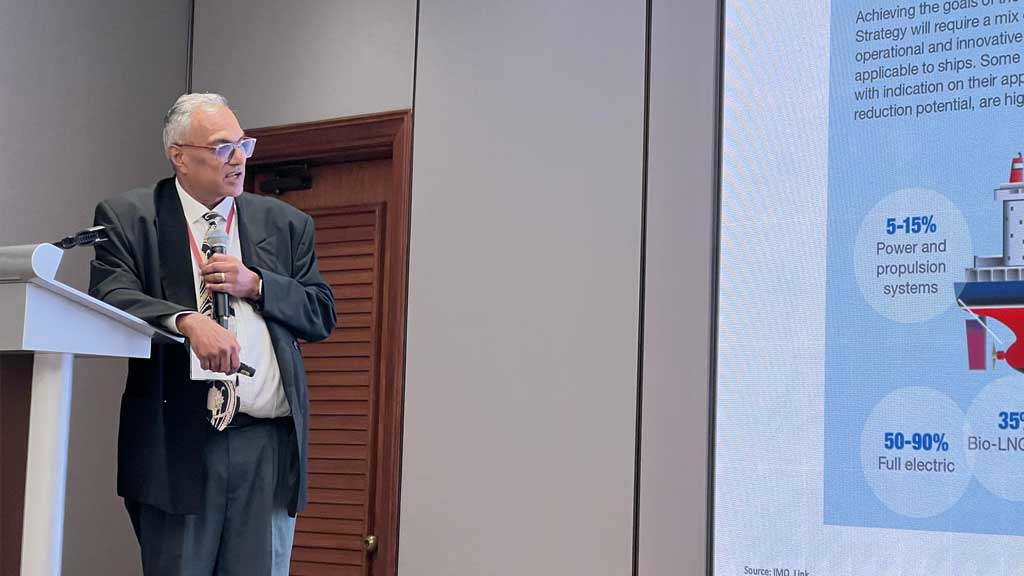
The Shift Towards More Versatile Greases: Meeting Lubrication Challenges Head-On
On September 28, the Asian Lubricant Industry Association (ALIA) hosted a webinar on Lubrication Challenges and Grease Selection, featuring industry expert Mikael Kruse, product manager for industrial greases at AXEL Christiernsson AB, based in Sweden.
The webinar wasmoderated by Paul Nai, chair of the ALIA Technology and Information Subcommittee and regional business director of Lubrizol Southeast Asia Private Limited.
During the webinar, Kruse outlined a trend away from specialised greases to more versatile options. This shift is driven by a growing demand from users for products that can handle a wider range of applications and reduce the complexity of inventory management, while still effectively addressing challenges posed by factors such as water, temperature, speed, vibrations and dust. This move towards versatility is further propelled by pressure on lithium prices and availability, prompting the industry to develop and explore alternatives.
Calcium sulfonate complex greases are a key focus for development. These greases, while softer and lower in viscosity, lack the versatility of lithium complex. Industry experts are actively working to bridge this gap, seeking to enhance the performance of calcium sulfonate complex greases to meet a broader range of lubrication needs. Pressure on lithium, from a price and availability perspective, is going to speed up the development of all other grades, says Kruse.
However, we are not there yet, he says. Especially at higher speeds and lower temperatures. Kruse, a current board member of the European Lubricating Grease Institute (ELGI), outlined several challenges affecting applications and considerations in grease development and selection.
Kruse has more than 27 years of experience in the grease industry since joining AXEL Christiernsson in 1995. As product manager, he is occupied by maintaining and developing Axel’s range of industrial greases, technical support and lubrication education.
During the webinar, Kruse highlighted the presence of water in lubricant applications as a key challenge. Water significantly elevates the risk of corrosion, washout and the decline in lubricating life. Lubricating greases do not mix well with water, “which happens sooner or later when you have a wet application”, says Kruse. It is imperative to select greases with superior barrier ability to protect against water ingress.
Calcium thickeners were recommended as a suitable choice for applications exposed to water. They excel in handling water ingress, corrosion protection and maintaining barrier ability over an extended period. In contrast, lithium and clay thickeners are less effective in the presence of water, leading to reduced lubricating lifetimes.
Another common challenge is the presence of dust and dirt in lubrication applications, increasing the risk of wear and surface damage. As particles and debris enter the lubrication zone, friction rises, resulting in increased energy consumption and a decline in lubricating life. Selecting greases that provide effective sealing and improved shock load and wear protection is crucial, says Kruse.
Extreme ambient temperatures, both hot and cold, pose significant challenges for lubricating greases. In hot conditions, oxidation and thermal degradation lead to thickening and reduced lubricity. In cold conditions, greases can become immobilised, resulting in a decline in lubricating ability. To address these issues, greases must possess good oxidation inhibition, thermal stability, and in case of cold exposure, low-temperature flow properties. Kruse also noted the role of dedicated additives for heated applications and complex or polyurea thickeners, which will last at a higher temperature for a longer time.
Applications involving heavy and shock loads require careful consideration of lubricating film thickness. Heavy loads make it challenging to maintain an adequate lubricating film, increasing the risk of metal-to-metal contact. High viscosity and viscosity index are essential properties to ensure effective lubrication under these conditions. Polymer content and complex thickeners can further reinforce the lubricating film, protecting wear and shock loads, says Kruse.
The speed of an application significantly influences grease selection. Slow speeds require high-viscosity greases, while high speeds necessitate low-viscosity options. Greases that are too thick at high speeds can lead to excessive friction and energy consumption, as well as shear degradation, says Kruse. Synthetic oils and complex thickeners offer solutions to address these challenges, expanding the temperature range within which greases can be used effectively.
Applications subjected to vibrations, especially those with high frequency and amplitude, are prone to shear degradation and lubricating loss. Proper shear stability, adhesion, and consistency are crucial properties to combat these challenges. Complex thickeners and, in some cases, polymer content can enhance a grease’s resistance to shear degradation, ensuring it remains effective even in high-vibration environments, says Kruse.
Informed decision-making is the key to achieving lubrication success. During the webinar, Kruse outlined the importance of understanding the unique requirements of each application to determine the grease abilities required. Armed with the knowledge of key performance needs and the properties that matter most, lubrication professionals can guide customers and end-users towards optimal grease choices—with a focus on value, rather than cost.
To gain deeper insights into these lubrication challenges and solutions, you can watch the full ALIA webinar in the members’ area of the ALIA website.



